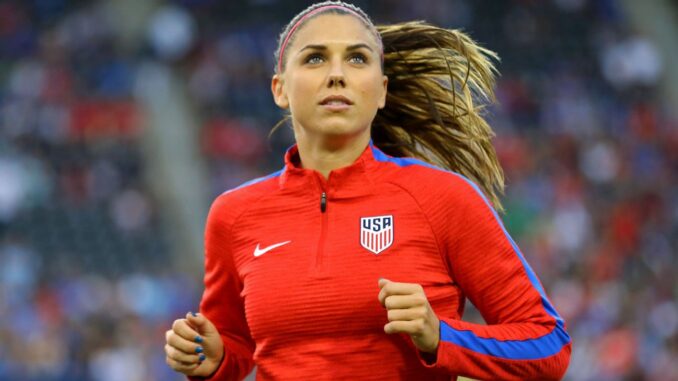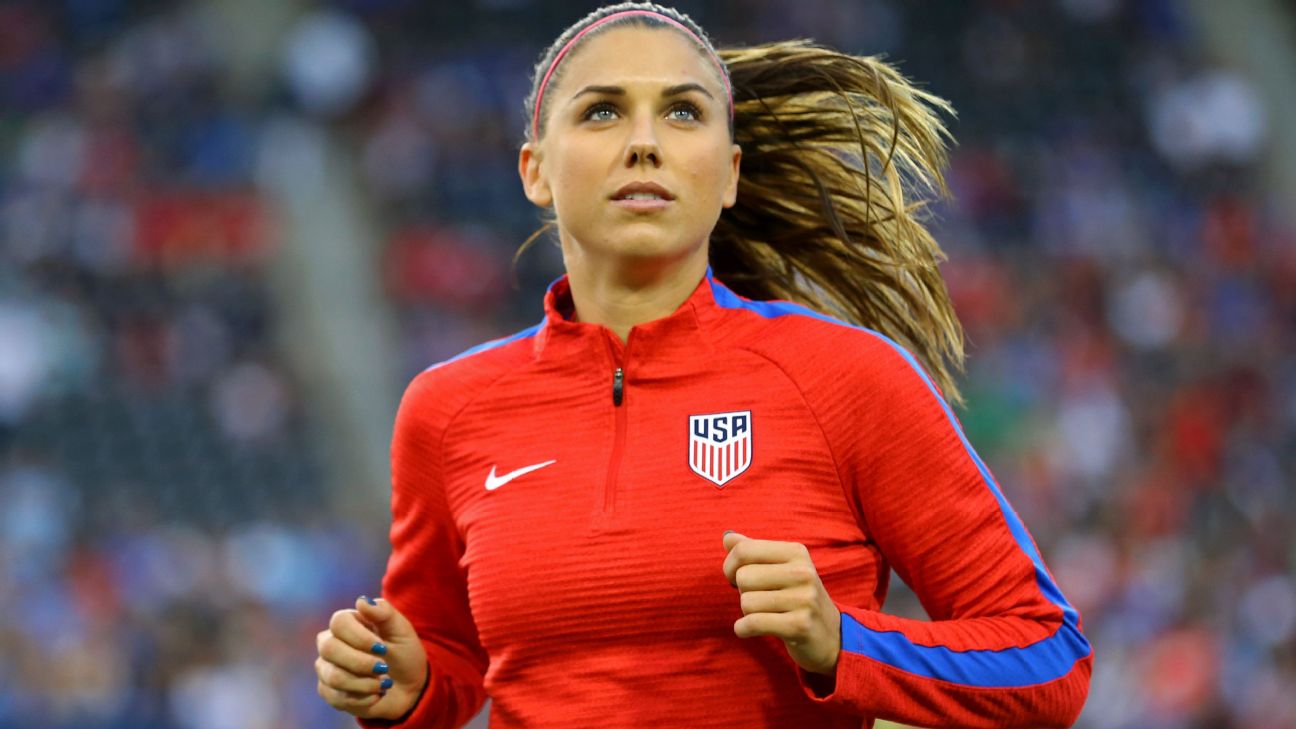
Alex Morgan’s journey back to the top of her game

Alex Morgan steadied the ball with a cushioning first touch of her left foot, and in one motion drove her right foot through the last kick of consequence for the U.S. women’s national team in 2017.
The decisive goal in a November win against Canada, the ball traveled little more than 6 yards toward the back of the net. But in Morgan’s case, the buildup spanned from the Pacific Ocean to the far side of its Atlantic counterpart.
The national team set out an audacious schedule this year in an attempt to figure out its future ahead of the 2019 World Cup and 2020 Olympics — playing eight teams that were ranked behind the United States in FIFA’s top 10 at the close of the year — and one of its most identifiable veterans took on an itinerary no less bold. While questions remain as to exactly what the team learned about itself by taking on the world, Morgan’s answer was as emphatic as that goal against Canada.
Rather than an intermission, 2017 lifted the curtain on her second act.
“Alex is hungry to prove herself,” U.S. coach Jill Ellis said after one of a string of impressive fall performances. “I mean this in the nicest way, she’s a predator. She’s trying to get on the end of balls, she’s battling for balls, working hard to regain — she generates a lot of our attack from her defensive pressure. I don’t know what I would attribute it to, but I’m just incredibly proud that she’s got to that point, in terms of realizing that [she can] just refocus on what she needs to do for her to be successful.”
Morgan scored a team-best seven goals this year for the U.S. women, despite playing fewer minutes than 10 teammates. Of course, she also tied for the team lead in goals a year ago, but this felt different. Between Olympic disappointment in Rio and a summer of losses with the expansion Orlando Pride in the National Women’s Soccer League — all of that on the heels of the emotional high that was a World Cup title the previous year — 2016 was something less than satisfying.
It would be overly dramatic to suggest the 2016 CONCACAF female player of the year, an award she this week won for the second year in a row, was in some sort of midcareer crisis. Yet as the calendar turned to 2017, a year in which she turned 28, it wasn’t irresponsible to wonder whether Ellis’ youth movement with the national team would incorporate her or begin to lay the groundwork to replace her.
“I wanted to feel successful both individually and with the teams I was playing with,” Morgan said. “So I did have kind of a bigger outlook on what I wanted to achieve this year.”
It was therefore telling that after Morgan began 2016 in San Diego, returning to her Southern California roots for her 100th appearance for the United States, she opened 2017 in Guingamp, France. There she set up two goals for Lyon in her debut for that women’s soccer giant. And rather than a celebration of career milestones accumulating in her wake, what awaited was a rugged challenge far from home and beyond her comfort zone.
Things are traditionally quiet on the international level for the United States in the year after the Olympics. Without a major tournament or qualifying events, U.S. players had fewer commitments to international duty, conditions that made it ideal for an outflow of players from the United States to Europe. And the rise of well-financed European clubs seeking to win or reach the Champions League created demand for that supply of talent.
Heather O’Reilly, recently retired from the national team, pursued a soccer dream with Arsenal. Crystal Dunn seized an opportunity to prove herself in her preferred position at Chelsea. Always able to find the David in any Goliath, Carli Lloyd signed at Manchester City, where she could live in the same building as Pep Guardiola and train at the same facility as Kevin De Bruyne but take on the establishment with a women’s team still new to the top of the English and European game.
But the first announcement came before the calendar even turned to 2017 when Morgan signed with Lyon. She would spend much of the first half of the year in France — competing for titles in the French league, domestic cup competition and Champions League — then return to the NWSL.
The moves to Europe had financial benefits in each case. Although unconfirmed, French media outlet SFR Sport reported Morgan would make approximately $30,000 a month for her short stay in Lyon. That is still less than a tenth of what a male superstar like Cristiano Ronaldo makes in just a week, but it is in the upper stratosphere of salaries in the women’s game. Morgan was added to a payroll that already included stars such as Ada Hegerberg, the Norwegian named Europe’s best player in 2016, and Dzsenifer Marozsan, rising star and captain of Germany’s national team.
“She’s literally one of the best players in the world, an absolutely fantastic player,” Lyon sporting director Marino Faccioli said of Morgan through an interpreter this spring. “That was our primary reason. Second reason is we wanted to open up to the U.S. market. In order to open up to the U.S. market, you need to attract the best players from the U.S. here.”
The gilded roster was the work of Jean-Michel Aulas, the very visible owner of the Lyon men’s and women’s teams who drew a bigger scrum of television cameras and microphones than any of the players when he strolled into the interview area after the Champions League home game with Manchester City. He is also responsible for the large new stadium outside Lyon that will host the opening game and final of the 2019 Women’s World Cup.
Leave a Reply